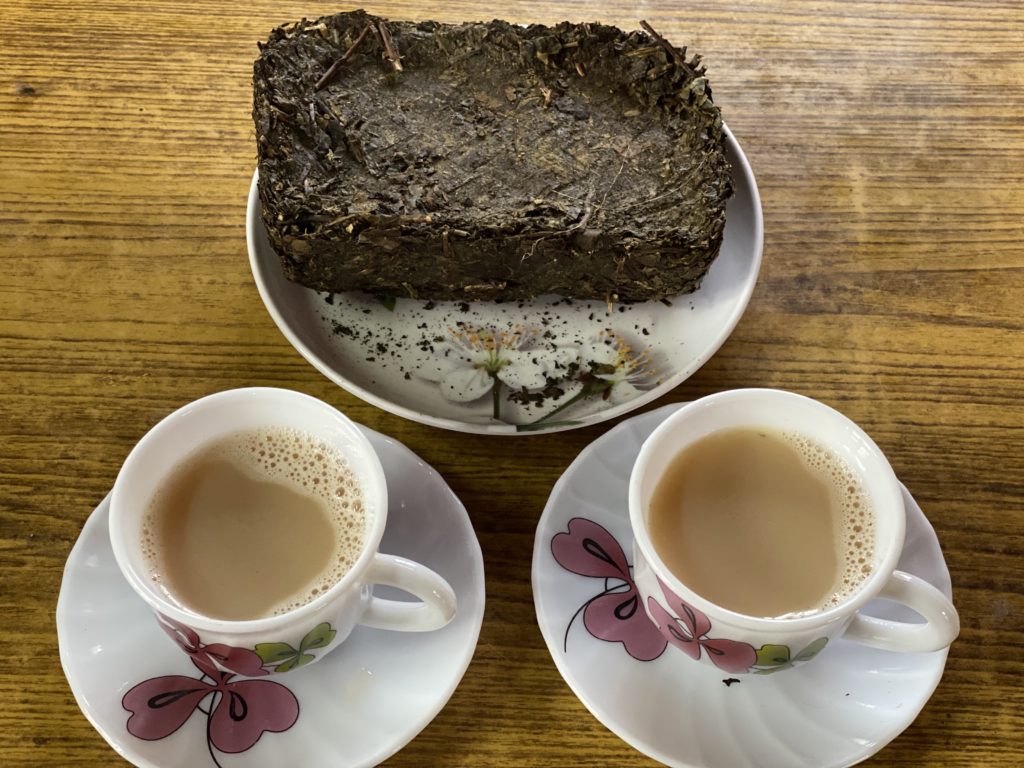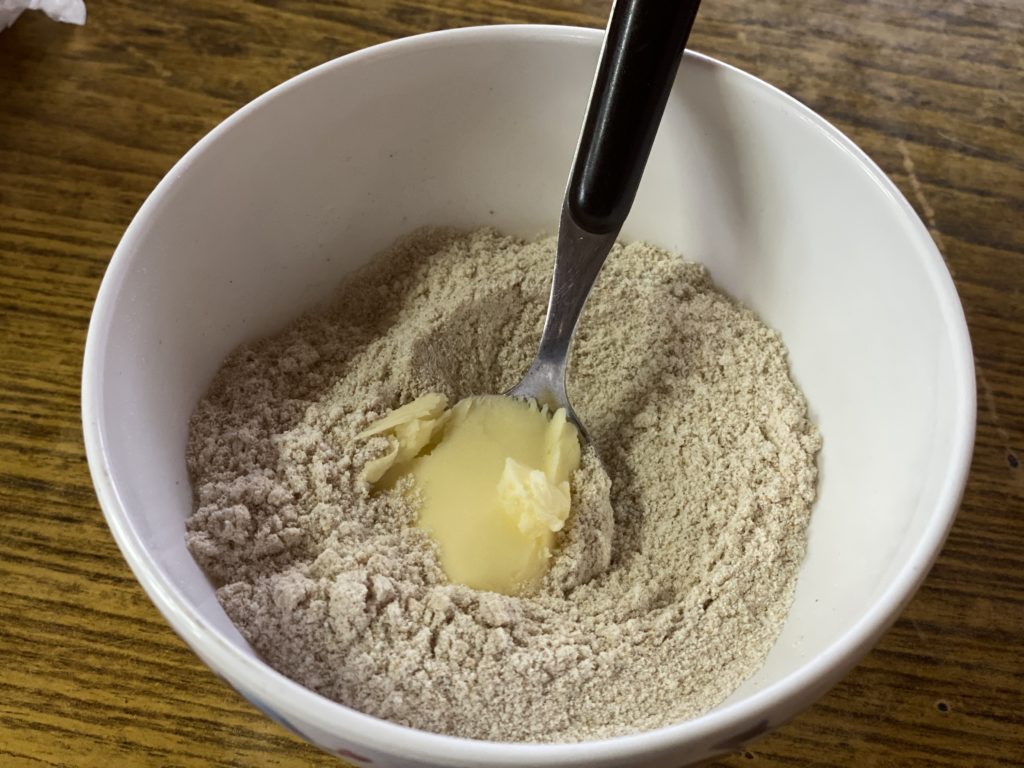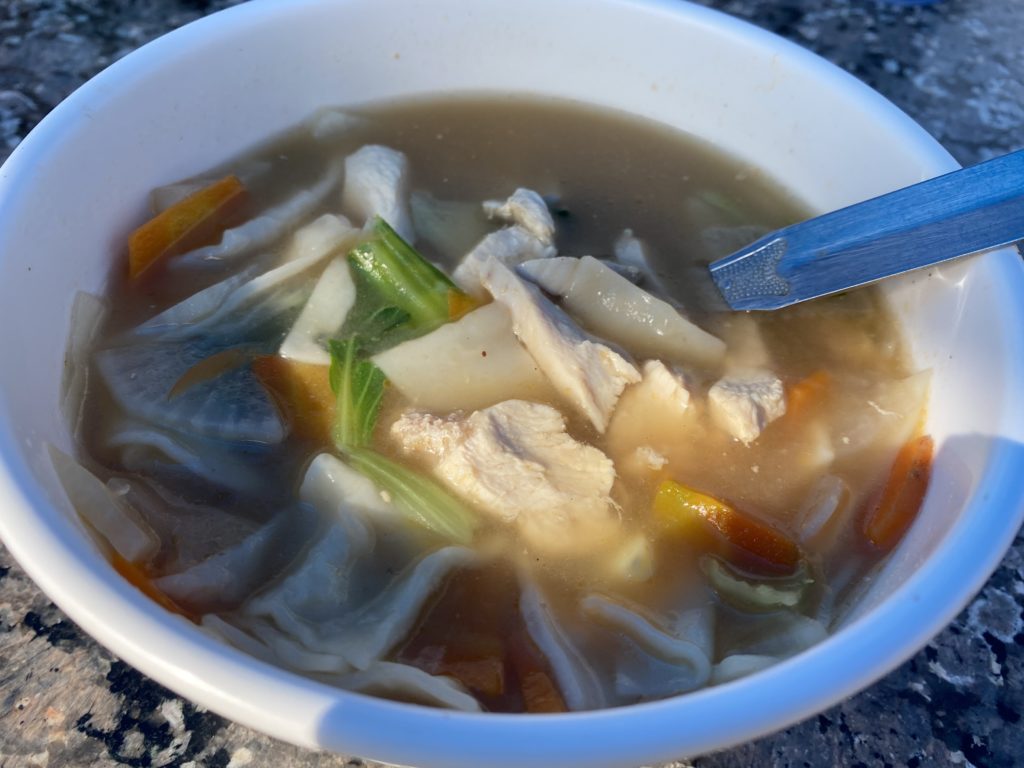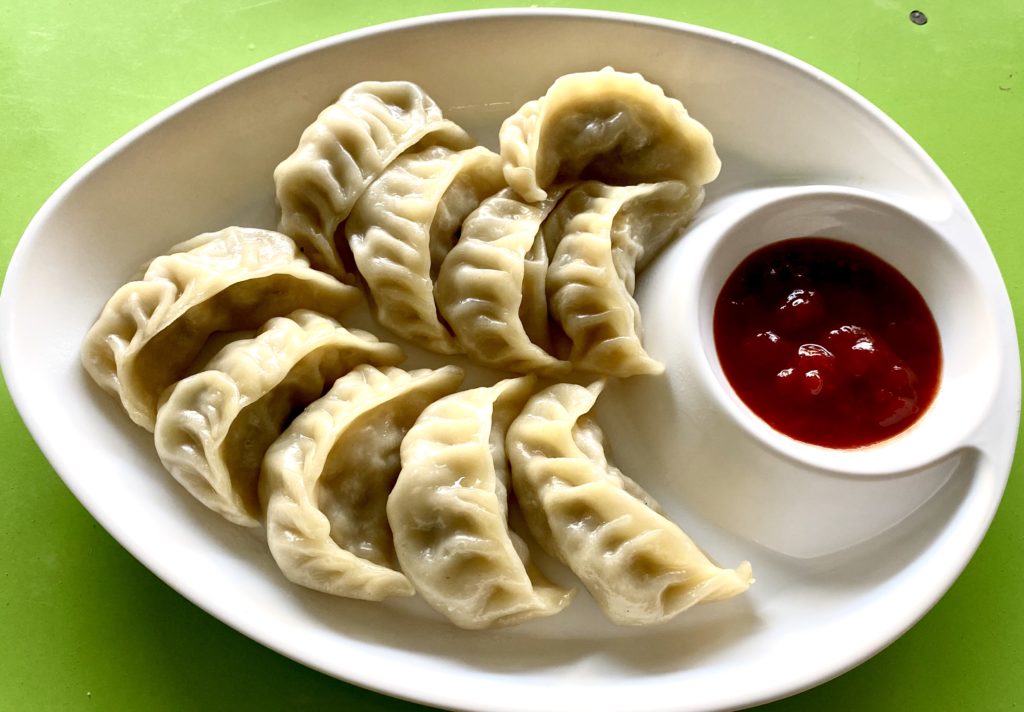If there’s one word that best defines Tibetan food, it is: hearty. The cuisine is rich, often heavy, but always deeply satisfying. Tibetan dishes are primarily made up of meat, grains and dairy, a result of its geography where fresh vegetables and herbs are scarce. Despite a limited list of ingredients, Tibetan cuisine has a diverse range of dishes ranging from stews and noodle soups to dumplings and dry meat.
Here, we list 6 quintessential Tibetan dishes.
Bhoe-jha (Tibetan Butter Tea)

If you’ve ever visited a Tibetan family at their home, there’s a very good chance that you were greeted with a cup of Bhoe-jha or the Tibetan butter tea. The drink, made by brewing black tea leaves and then adding milk, butter and salt to the mixture, is a staple in Tibetan households. The taste can be disarming at first, but once you get used to it, there’s no drink quite like Bhoe-jha that will warm you up during winters. The tea can be made using either dri or cow butter. People usually call yak butter/cheese, but yak is a male animal. The female is called dri, one should say dri butter or dri cheese.
Tsampa (Roasted Barley flour)

Barley is the most important crop of Tibet and tsampa is prepared with flour milled from roasted barley, has hearty and nutty taste. Tibetan people are collectively referred as po mi tsamsey, this is how Tibetan people are collectively referred because this means tsampa eaters as Tibetan people from different regions and sections always eat and appreciate tsampa. The mixture prepared with the national beverage called butter tea and roasted barley flour, its then rolled in to small balls with hands and often eaten with the butter tea itself. To eat tsampa, hold the the bowl provided in your left hand and use your right hand to mix the flour with a little tea, rolling the mixture into small lumps. Use only the fingers of your RIGHT hand when touching food. Eat the lump of tsampa/tea with your fingers. Tsampa is a staple throughout Tibet and across the world where Tibetan refugees have built homes. The roasted barley flour is versatile in its use and is eaten both for breakfast and dinner. For breakfast, tsampa is traditionally eaten with a cup of butter tea. You can also choose to add a dollop or two of butter and a spoonful of sugar to give it a creamy and sweetened taste. Think of Tsampa as a Tibetan cereal, but only healthier and much more nutritious than your average box cereal. It can also be eaten as a dinner dish. Tsamthuk or tsampa soup is a popular dish made by mixing tsampa into a bone broth and adding minced meat for additional flavors. You can also make a vegetarian version by using rich vegetable broth.
Thenthuk

Thenthuk in Tibetan translates to hand-pulled noodle soup. It’s a perfect dish for those frosty winter evenings. A slurp of thenthuk is all it takes to warm you up. The main ingredients are wheat flour dough, meat and vegetables. The choice of meat used in the noodle soup depends on the location. For instance, in Nepal, where beef is not generally eaten, you’ll find that Tibetans in Nepal usually prepare buff thenthuk. Although traditionally a meat dish, you will find that restaurants today serve vegetarian version given the fact that more people in the Tibetan Buddhist community are adopting vegetarianism.
Gyuma
Tibetan blood sausages. A purplish-black sausage made out of a mixture of ground beef or yak meat, blood, salt and rice encased in intestine. Some like it steamed, others prefer it fried with onions and chilli peppers. Either way, it’s delicious.
Momo (Dumpling)

Momos or Tibetan dumplings are perhaps the most famous export of the Tibetan people to the world. Traditionally, momos are made of wheat flour, minced meat mixed with chives and seasoned with salt and oil. As Tibetan refugees settled down in Nepal, and momos transcended borders, it slowly became a part of local cuisine. Momos, today, are as much a Nepali food as Tibetan. Contrary to Tibetan dumplings, Nepali momos typically are more spicy due to addition of masala in the minced meat mixture. The filling is encased in either round or moon-shaped wheat cases which are then steamed in a steamer. Vegetarians, fret not! There are also different varieties of vegetarian momos available, the most popular being dumplings made with potato and cheese mixture.
Sha-Kampo
The Tibetan dried meat is a ubiquitous presence in a spread during festivals, most particularly during Losar, the Tibetan New Year. Cut into long strips, the meat is air dried months before the festival. It’s often eaten as a standalone dish with butter tea or added to noodles and curries.
Where to eat Tibetan food in Pokhara?
It’s often a challenge to zero down on a restaurant when travelling to a new place, especially if you are looking to try a cuisine that is strange and unfamiliar to you. We, at Tibetan Encounters, believe that there’s no better way to dive into a cuisine than to eat at the home of a local family.
